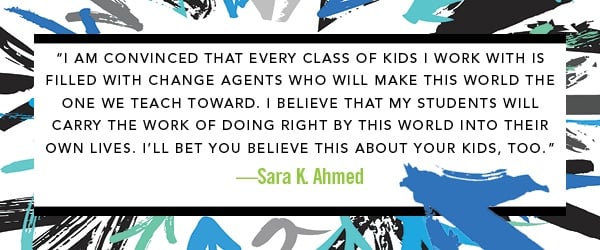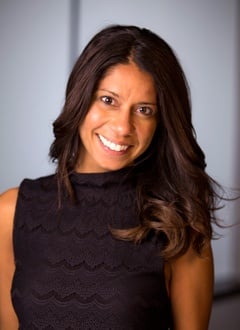
The following has been adapted from Being The Change by Sara Ahmed.
The following has been adapted from Being The Change by Sara Ahmed.
Earlier in my career, I was ambitious to have my class agreement (or class constitution, compact, or contract) done on day one of school. I can still remember the point in the lesson where each year’s new students would sit on the rug with me and listen as I told them what should be on the chart and then invited them to add a few ideas. Each year, the students would dutifully acquiesce, recalling rules from every previous school year: Raise your hand to speak. Respect each other. One person speaks at a time. And on and on. Their Class Contract game was on point! On autopilot, even.
During the year, any time I needed to, I could direct students’ attention to that chart—the one we had made “together.” I was doing a ton of superficial reminding, and they were doing a ton of compliant parroting. Looking back, I wonder: What did those kids learn from that experience? What message did I send if this is how we set up class “agreements”? I fear it was that listening means silence. That respect equals compliance.
I meant well with this work. I wanted to give my students tools that would help us listen to one another and build a respectful community. Spelling out a list for them seemed like the most direct way to do it. But, if we want our kids to truly respect one another, if we want them to listen to each other and actually hear what they are saying, we have to meet them where they are, consider interactions from their perspectives, and find teachable moments along the way. What does “respect” look like, sound like, feel like? We cannot use one-size-fits-all anchor charts.
If we want kids to attend to the multiple perspectives around them and listen actively and empathetically, we need to mentor them and show them how. I purposely use mentor, and not teach, because we need to be practicing these skills ourselves rather than just telling them to do so.
The most important guidance I can give you here is to provide safe opportunities to do the social comprehension work of listening every day. Our goal is to make the process of active listening automatic in their thinking and writing, and to treat listening to someone else as an act of love. To do this, we need to give kids plenty of opportunities to make this type of thinking visible in our dialogical classrooms. These opportunities need to be real enough that kids will use the skills they learn in our classrooms in their lives beyond school. .
There are few absolutes in social comprehension; full immersion in it often yields more questions than answers. This work is messy because it is authentic and because it deals with human beings. So, I humbly ask (maybe even humbly implore) you to head into this work with a commitment to uncertainty, while understanding the value of how it can better our citizenship in this big world.


Sara K. Ahmed is currently a literacy coach at NIST International School in Bangkok, Thailand. She has taught in urban, suburban, public, independent, and international schools, where her classrooms were designed to help students consider their own identities and see the humanity in others. Sara is coauthor with Harvey "Smokey" Daniels of Upstanders: How to Engage Middle School Hearts and Minds with Inquiry. She has served on the teacher leadership team for Facing History and Ourselves, an international organization devoted to developing critical thinking and empathy for others. You can find her on Twitter @SaraKAhmed.



